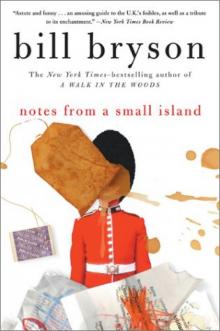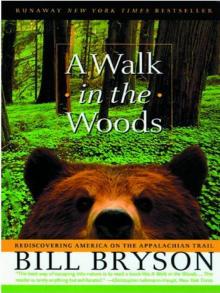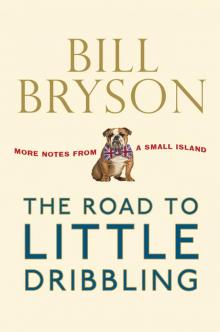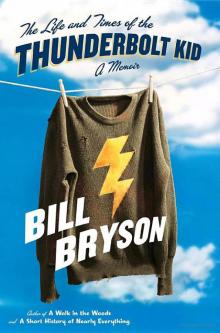- Home
- Bill Bryson
Icons of England Page 2
Icons of England Read online
Page 2
Happily, there is a fourth and more encouraging quality to icons, as this book so engagingly attests: people love them. They don’t just appreciate them, the way you might appreciate a good book or an expensive dinner. They love them like a child. National icons really are the things that set countries apart and yet they are almost always taken completely for granted, which means they often aren’t missed until they are gone for good. So it is wonderful to see them given the warmth and reverence they deserve in the pages that follow.
This book is also a timely reminder of how lucky we are to have a heroic outfit like the Campaign to Protect Rural England, to make sure that other iconic features – like Green Belts and hedgerows, long views over dreamy landscapes and a thousand things more – aren’t lost as well.
Our job is to make sure that a book like this is always a celebration and not a memorial. These are thought- provoking and refreshing contributions. Many are anecdotes and memories that celebrate being in and enjoying the countryside as much as they praise historic monuments and locations. We are immensely grateful to all the writers who have contributed, including all those who wrote pieces for this new edition. We were especially pleased to receive a thoughtful and touching contribution from the great and kindly Miles Kington shortly before his tragically early death. And I enjoyed reading Mary Smith’s ‘Forever Tranquil’, winner of the Daily Telegraph competition to write an entry for inclusion in this book. As for the rest of you, we can’t thank you enough for your support.
IN SEARCH OF ENGLAND’S GNOMES
Kate Adie
on deer parks
I USED TO WONDER if deer were posh people’s ornaments; the aristocratic equivalent of the garden gnome. For these animals do not seem real. They are never out of place in fairy tales, myths and legends – the stories of Herne the Hunter and Robin Hood. And although our history books seem full of them – the royals grew forests to hunt them in, Georgian landowners created parks to show them off, and the poor used to enjoy feasting on them – many people have never seen one. But if you are lucky enough – as I was in my childhood – to catch these enigmatic beings on show, you’ll soon realize the countryside isn’t quite the same without them.
As a child, it was a treat to take a run in the car into Swaledale or Teesdale, away from the industrial cranes and pitheads of the County Durham coast. On the way back, full of egg and tomato sandwiches and home-made shortbread, we would always stop on the edge of the village of Staindrop. Once there, I’d peer over the drystone wall towards the outline of Raby Castle and stare at its vast park of rather lumpy northern grassland, with a small copse here and there.
With luck came the moment when I could squeak, ‘There they are!’ as a clutch of brown thin-legged creatures would move tentatively into view – as if they’d been wondering whether it was worth putting themselves on show. Some would browse, others would stare snootily, and the antlered boss would stand at a distance, as king of the park. They would always adopt a rather grand pose, which I found amusing when accompanied by their silly twitching tails.
Up close, deer are delightful, if a bit dim. They’re not interested in being pets; they have no desire to please; they won’t come when they’re called and go bananas when a sheepdog appears. They seem made to decorate the countryside – when they feel like it – and they’re rather good at it. Not only are they elegant, but they always come as something of a surprise. Unlike cattle and sheep, which can be relied upon to be more or less where you expect to find them, deer play hide and seek. On rural roads, there are signs saying ‘Caution: Deer’. You proceed cautiously, expecting a stag to leap up to your bonnet, or plant itself foursquare and elk-like in the middle of the tarmac. But they somehow never appear. They remain concealed in the greenery, and wait until you have passed, before strolling out, probably congratulating each other on maintaining the view in the village pub that ‘they may or may not exist’.
For many people, a deer will never be anything more than an image of Bambi in a picture book. But it is worth making an effort to catch sight of the real thing. While elusive, they come into their own on country estates, when they eventually deign to graze in the sunshine. They stroll delicately, eyeing the landscape as they go – ready to bound into cover at the slightest hint of danger. Just watching them lets you imagine what it would be like to have been a poacher in the Middle Ages, longing for a portion of tender meat to supplement a dull diet, or a newly fortunate landowner dreaming of a landscaped park filled with handsome fallow and roe. For me as a child, the surprise of seeing deer was the icing on the cake, the unexpected bonus of a trip to the countryside. And waiting for them to appear was all part of the fun.
A PLACE IN THE COUNTRY
George Alagiah
on the English countryside
‘MY PARENTS LIVE IN the country. Would you like to come and stay with us?’ I can’t remember if those were the exact words, but I do recall the fact that it was the first time I’d heard of ‘the country’. This was 1967. I was eleven going on twelve, and had just arrived in England. I had moved from one country, Ghana, to this one, so I was confused: to what was my new English friend referring? Just weeks into what would become a lifetime attachment to England, I had already learned the most important lesson for an immigrant – don’t embarrass yourself, just pretend you know what the locals are talking about. I accepted the offer and, some days later, found myself on the train from Portsmouth to Sussex.
I didn’t fully understand it at the time. But on that little weekend retreat from our city school I encountered the country – not as a place, but as an idea. Back in Ghana, or further back still in Sri Lanka, where I was born, the ties with the rural areas were visceral. The countryside was what defined a person, the town or city merely the place where one made a living. Over the decades, with a second or even third generation born in the heat and dust of the towns, the enduring strength of the extended family pulls one back to the source of the bloodline – to the village or hamlet where it all began.
Here it is different. Here the power of the Industrial Revolution tipped the balance in favour of England’s towns and cities. The smokestacks and tenements changed the physical landscape, but they also altered the mental landscape. The ‘country’ had to be reinvented as an escape and a refuge from the demands of urban living. Sometimes the countryside has been reduced to a leisure activity, a package deal shorn of nature’s life-affirming rhythm, and cleansed of the muck and smell that is so much a part of rural life. But the real thing is there all the same – every right of way is an invitation, every stile a step into somewhere gentle and generous.
I write this after a long weekend in the fields and folds of North Cornwall and Devon. In one day we walked along the bank of the river Ottery, courtesy of an obliging farmer, tucked into some of the best pub grub in Lydford village and ended the afternoon underneath Widgery Cross on Brat Tor. From the granite mass that is Dartmoor, we watched a sinking sun’s fading light settle on Cornwall, stretched out to the west like England’s foot. To go from the verdant squelchy-welly track down to the Ottery’s floodplain and then to the bleak and barren heights of Dartmoor is to experience, in the space of just a few hours, the infinite variety of this small island of ours.
The country is not so much another place as another state of mind. There is a trick to it, though. You have to leave the call of the BlackBerry behind. You need to stop when you feel like stopping, look when you feel like looking and talk when you feel like talking. And then you might learn, as we did from a local, that the reason hundreds of starlings in flight will twist and turn in unison is because the ones on the outside are constantly trying to get to the inside where they feel safer.
Some forty years on from that first trip, I finally understand what going to the country is all about. And now it’s my turn to offer an invitation: ‘Fancy a weekend in the country?’
FROM PILLAR TO POST
Peter Ashley
on postboxes
THE FIRS
T PILLAR BOX I saw was at the end of our road. It had a cream oval on the top with the words ‘Post Office’ and a red arrow pointing to the shop door two yards away. My mother would lift me up to it in order to send letters skimming into the darkness, and I remember being there when the postman unlocked its door with a key from a huge jangling bunch and started shovelling the mail into a rustcoloured sack.
I knew from comics that burglars used sacks, and had to be dissuaded by my mother from the notion that a theft was being committed. I had imagined that mail was collected in an underground cavern where tiny post elves – such as those in a Rupert Bear story – sorted it all out. The criminal element persisted when my brother told me that when (not if ) I ended up in jail, all I could expect to be doing in my dungeon would be sewing mailbags.
Anthony Trollope is credited with introducing postboxes to the Channel Islands in 1852, before knocking out his ‘Barsetshire’ novels. The boxes arrived on the mainland a year later in Botchergate, Carlisle. It is odd that the experiment didn’t start in the capital – usually the test bed for innovation. The first pillar box in our present monarch’s reign was planted near the Horse Guards in 1952.
The royal connection took on new relevance when I bought the little I-Spy book In the Street, and postboxes became quarries in a hunting game to spot royal ciphers. These cast-iron monograms enabled a rough chronology to be applied: the flowing script for Victoria, the spare initials for George V. Even Edward VIII found his cipher cast on to a few boxes before he decided to throw in the crown. Much later, I took pleasure in discovering the many variants of design. The early vertical-slitted box near Bishop’s Caundle in Dorset; the acanthus leaves topping a Penfold hexagonal box in Chiswick; double boxes on city streets; airmail boxes in sky blue. And pillar boxes are not solely free-standing. Rural areas were served by boxes set into brick or stone walls; hump-backed and round-topped boxes clamped to tarred telegraph poles.
Icons of the English scene, pillar boxes stand like red and black guardsmen awaiting their orders. The perfect visual shorthand for communication, our digitalized cyberworld gives us nothing as potently recognizable. Remarkably, most of them are still with us, often all that stands between us and our messages, invitations, greetings and condolences reappearing – as if by magic – just about anywhere in the world. Occasionally they will be struck off the postman’s rota. But they still obstinately cling on to pavements, grass verges and walls. They are difficult to uproot; like icebergs, there’s almost as much below the pavement. One wall box – that once served Waddon Manor and other less grand abodes below Corton Down in Dorset – still revealed its fretwork grille sitting in the bottom when I cautiously opened the now unlocked heavy door. Apparently this is a snail trap, designed to prevent the shell-backed creatures from consuming the mail – how, I’m not quite sure.
I’ve always feared that these essential items in the iconography of England may one day disappear, or that in the spirit of the age I might wake up and find them all painted pale beige and owned by the Dutch. But I think there is now an agreement in place between the Royal Mail and English Heritage that conserves them. In the end, though, it is down to us to care about them as much as we utilize them for their vital purpose.
FROM LITTLE ACORNS
Clive Aslet
on ancient trees
ENGLAND WOULD BE NOTHING without its ancient trees. We have far more of these arboreal veterans than anywhere else in Northern Europe. Just as Trinity College, Cambridge is supposed – by Fellows of Trinity College – to contain more Nobel Prize winners than the whole of France, so Richmond Park supports more 500-year-old trees than France and Germany combined.
With our national affection for the Major Oak in Sherwood Forest, ancient cedars of Lebanon, not to mention Newton’s apple tree in Lincolnshire (the tree sprouted anew after being cut down in the eighteenth century), we have been better than the Mediterranean countries at recording them. It is thought there are some ancient olive trees in Greece, but they have not achieved the degree of celebrity of, say, Sherwood’s oak. We name our ancient trees. They are the subject of awe and fascination. They almost seem to speak to us, revealing something about our values and the vast span of history they have witnessed.
In Scotland, the Fortingall Yew must be one of Europe’s oldest living organisms – its age calculated in millennia. Dating ancient trees is not easy: they cannot be carbondated because they are still growing, and the tree rings cannot be counted because they are hollow. The Fortingall Yew parted company with the original shape of its trunk long ago and now survives as a one-dimensional ligneous wall. The late Duke of Buccleuch, who had a passion for trees, made a pilgrimage to see it, saying, ‘I never cease to marvel at the fact there is something living today that was 3,000 or more years old at the time of the first Christmas.’
Visiting a tree such as the Bowthorpe Oak in Lincolnshire, so hospitably big the hollow trunk was used as a dining room in the eighteenth century, makes me reach for the dictionary. Numinous is the best word I can come up with. Trees have always seemed sacred (think of the tree of Calvary, as the cross of the Crucifixion is sometimes called); their redemptive quality appears all the greater in the age of climate change, symbolizing the power of trees to redress the atmosphere’s imbalance of CO2.
Our blessing in this matter of ancient trees has little to do with our forestry. Woods do not necessarily allow trees to survive to a great age. Competition with other trees causes them to grow tall but thin, so eventually they fall. Britain’s ancient trees are a legacy of the top people’s passion for hunting. From the days of William the Conqueror, kings and aristocrats needed open country to ride over. This parkland included free-standing trees. Gouty and misshapen with limbs lopped off – but with deep roots, these ‘King Lears of the natural world’, as Thomas Pakenham puts it, have stoically endured all that has been flung at them.
The fact they have survived into the twenty-first century has something to do with national sentiment, but more with a fact of history. Marauding armies saw them as convenient fuel, but because Britain was at peace throughout most of the eighteenth century and thereafter, its trees were spared.
Once, these trees would have enjoyed a sappy youth. They have now shrunk, as we all must, into senescence. As they collapse back into the earth, they become host to all sorts of biologically interesting intruders – the decaying timber of a dead tree is home to bats and alive with unseen invertebrates. But the most biodiverse are those still clinging tenaciously to life. Ancient trees have been called Britain’s equivalent of the rainforests. And many of the most spectacular are oaks, our national tree.
RURAL RIDES
Paul Atterbury
on rural branch lines
THE VICTORIANS DID MANY good things for us – not least the building of a nationwide and fully integrated railway network. Of course, we have already undone their great work by removing much of the rural branch line experience there is nothing better than getting off a modern mainline train at a busy station and crossing to a distant platform to board a small, usually one-car, train. I still thank our ancestors every time I find, in a quiet corner of England, that there remains a way to journey into the past, and do just that.
By 1900, about 20,000 miles of railway linked practically every town and many villages all over Britain. This meant the freedom of travel had become accessible to even people living in the most remote corners of the land. Of this dense network of lines – main lines, secondary and rural routes and branch lines – the branch lines were the most important in social terms. And there were hundreds of them all over the country, winding their way through hills and dales, mostly for a few miles but sometimes much further. They carried people to school and to work, on shopping trips, family outings and on holiday. They facilitated courting and greatly improved the national gene pool. They carried agricultural goods, materials for industry and things for the village shops. And in so doing, they – and their employees – were the heart of the communities
they served.
The branch line legacy, and the society it looked after so well, lived on into the twentieth century and through two world wars. It wasn’t until the 1950s that things began to change, when people and goods started to travel more by road. Left to their own devices, the railways could have responded to the challenge. But interference crept in and the old Victorian structures, which took into account social needs and benefits, and allowed the profitable main lines to subsidize the branch lines, were casually abandoned. Costcutting and modern efficiencies meant the rural routes and branch lines had to go. So throughout the 1960s, the axes swung and thousands of miles of railway disappeared.
For those prepared to use a map, a timetable and throw caution to the wind, the rural branch line experience is still there for the asking. By this I do not mean the preserved tourist railways. These offer a vision of railway life, but it is far better to make use of and enjoy the scattering of branch lines that somehow escaped the ravages of the 1960s and linger on in parts of Britain – still doing what they were built for in the first place.
The survivors include real branch lines, and others created by the truncation of former through routes. Cornwall has classic examples of the former, from Liskeard to Looe and from St Erth to St Ives, while East Anglia boasts an excellent couple of the latter variety, Marks Tey to Sudbury and Norwich to Sheringham. Oxfordshire has two good ones to Henley and Marlow, while elsewhere in the Midlands, the North and Wales there are exciting long branches to Matlock, Whitby and through Snowdonia to Blaenau Ffestiniog. Sadly, classic branch lines do not survive in Scotland. There is no better way to travel and see the spectacular British landscape pass by the window.

 Notes from a Small Island
Notes from a Small Island A Short History of Nearly Everything
A Short History of Nearly Everything A Walk in the Woods
A Walk in the Woods I'm a Stranger Here Myself
I'm a Stranger Here Myself The Mother Tongue
The Mother Tongue Shakespeare
Shakespeare A Short History of Nearly Everything: Special Illustrated Edition
A Short History of Nearly Everything: Special Illustrated Edition The Best American Travel Writing 2016
The Best American Travel Writing 2016 The Road to Little Dribbling
The Road to Little Dribbling The Life And Times Of The Thunderbolt Kid: A Memoir (v5.0)
The Life And Times Of The Thunderbolt Kid: A Memoir (v5.0) Made In America
Made In America Seeing Further
Seeing Further Shakespeare: The World as Stage
Shakespeare: The World as Stage The Life and Times of the Thunderbolt Kid
The Life and Times of the Thunderbolt Kid At Home
At Home Bryson's Dictionary For Writers And Editors (v5.0)
Bryson's Dictionary For Writers And Editors (v5.0) Neither Here Nor There
Neither Here Nor There Bill Bryson's African Diary
Bill Bryson's African Diary